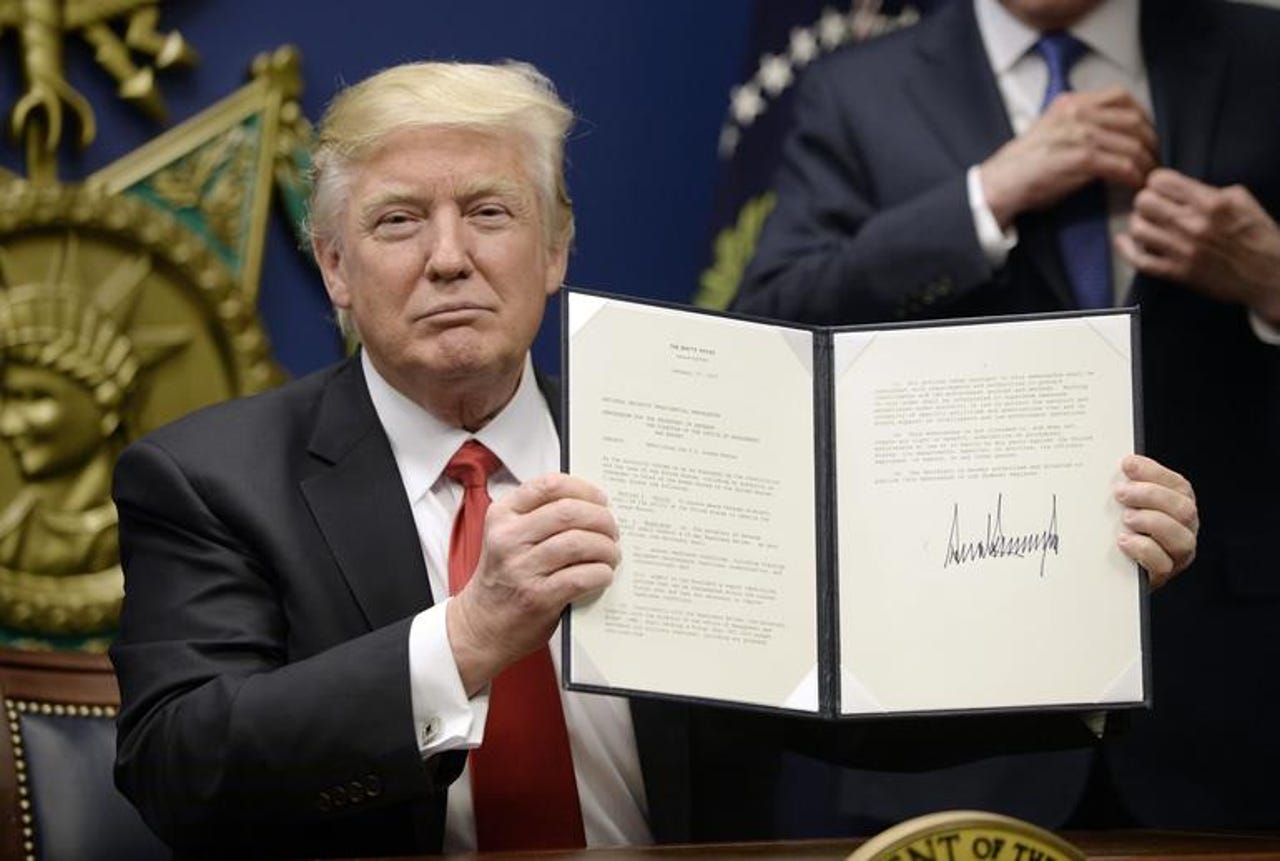Trump's national security strategy outlines 'cyberspace' goals


Trump signs an executive order earlier this year. (Image: file photo)
President Donald Trump unveiled a national security strategy on Monday that highlights his administration's "America First" approach to the world and foreign policy.
Featured
The sprawling 68-page document touches on a number of national security concerns, including economic ties with China and the lethality of the US nuclear arsenal, as well as a brief list of action items that aim to improve the country's approach to cybersecurity.
According to the White House, the US will "invest in capabilities to support and improve our ability to attribute cyberattacks, to allow for rapid response." Translated, this likely means there will be an effort to improve the aging IT infrastructure of the US government.
For instance, the national security document goes on to say the US will "improve our cyber tools across the spectrum of conflict to protect US Government assets and US critical infrastructure, and to protect the integrity of data and information." There's also a push to "recruit, train, and retain" a workforce of cybersecurity professionals across government agencies and departments.
The final cybersecurity nugget suggests that the Trump administration plans to make it easier for US government to conduct cyber operations against adversaries "as required."
"We will work with the Congress to address the challenges that continue to hinder timely intelligence and information sharing, planning and operations, and the development of necessary cyber tools."
"When faced with the opportunity to take action against malicious actors in cyberspace, the United States will be risk informed, but not risk averse, in considering our options," the document stated.
Earlier this year, President Trump signed a long-delayed executive order that established a number of cybersecurity reviews across the federal government, but stopped short of any significant change to US policy.
The order instructed agency and department heads to use cybersecurity best practices from the private sector to further secure their departmental systems, ahead of a wider effort to modernize cybersecurity across the government.